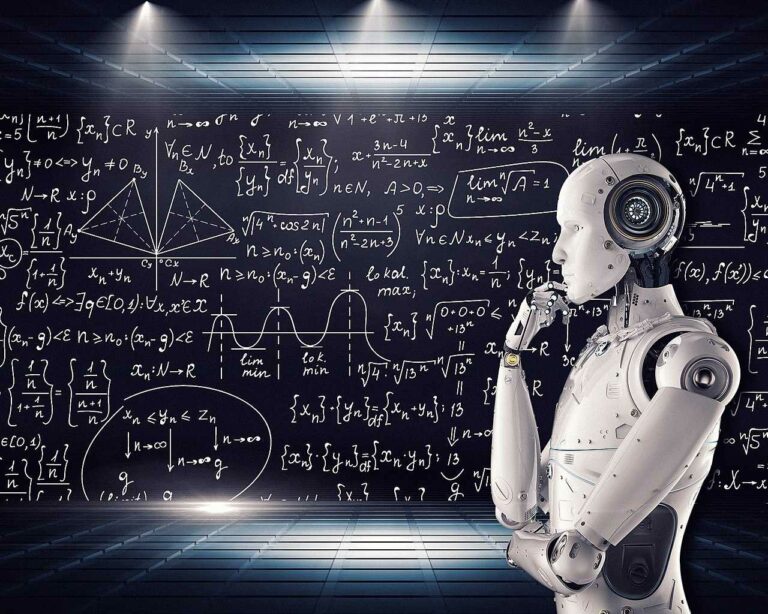The dangers of Artificial Intelligence for business and the workplace

Artificial intelligence (AI) has substantially changed many facets of business and the workplace in recent years due to its fast growth. Numerous advantages are provided by AI technology, including higher productivity, better decision-making, and improved consumer experiences. Over the years, artificial intelligence (AI) has quickly altered the corporate environment, providing previously unimagined prospects for innovation, efficiency, and development. Yet, as artificial intelligence (AI) technologies evolve at an exponential rate, it is critical to recognise and manage the potential threats they bring to organisations and the workplace.
While AI has great advantages, it also has substantial hazards that need proactive actions to ensure responsible and secure use. Along with these benefits, there are several possible risks related to the use of AI. This essay digs into the possible dangers of artificial intelligence, emphasising the need of protecting businesses and the workplace in this fast-expanding digital world while outlining major issues and offering suggestions for minimizing the dangers of artificial intelligence to businesses and the workplace.
What is artificial intelligence?
Artificial intelligence, or AI, is the term used to describe the creation of computer systems that are capable of carrying out activities that traditionally call for the human intellect. Problem-solving, education, thinking, perception, and language understanding are some of these activities.
There are many uses for AI in the workplace and business. Automated data analysis, chatbots for customer service, tailored marketing, predictive analytics, process automation, and virtual assistants for administrative work are some examples of frequent uses.
AI’s potential business and workplace benefits
AI has several advantages to businesses and workplaces, including improved decision-making abilities, automated repetitive jobs, superior customer experiences, and data analysis for insightful insights. Here are some of the ways AI technology shows the potential to benefit enterprises below:
- Enhanced productivity and efficiency: Processes may be streamlined and human error can be decreased through automation.
- Improved ability to make decisions: AI systems can evaluate vast amounts of data and offer insightful information to assist in making strategic decisions.
- Automation of repetitive jobs: repetitive jobs automation can free up employees’ time for more complicated and creative work by assigning mundane and repetitive chores to AI systems.
- Better customer experiences: Chatbots, recommendation systems, and customization strategies enabled by AI can raise customer engagement and satisfaction.
- Data analysis and insights: AI algorithms can detect patterns and trends in data, allowing businesses to make data-driven choices and gain a competitive advantage.
The dangers of AI in the workplace and for business
1. Bias and ethical implications
One of the major concerns is the ethical implications of AI. AI systems are trained using massive volumes of data, and if these systems encounter prejudices or other types of discrimination, they may reinforce and exaggerate pre-existing social biases. For example, AI algorithms employed in employment practises may unintentionally prejudice specific groups owing to biased historical data.
Such discriminatory practices injure both individuals and corporations, exposing them to penalties and reputational damage. To mitigate these dangers, businesses must promote transparency and diversity in AI development. By using impartial datasets, applying ethical concepts, and establishing interdisciplinary teams, organisations may reduce prejudice, advance justice, and cultivate inclusion in AI applications.
2. Job replacement and workforce change
AI-powered automation can boost productivity, reduce costs, and streamline procedures. Yet, employment loss is a cost of technological innovation. AI systems are capable of efficiently executing some repetitive and regular jobs, which may result in workforce changes and job losses.
To overcome this issue, businesses must be proactive. Companies should focus their efforts on retraining and upgrading their personnel, shifting them into areas that need unique human abilities like creativity, critical thinking, and emotional intelligence. Companies may create a more harmonious cohabitation of people and AI by investing in programmes that promote continual learning and job role redesign.
3. Threats to data privacy and security
To develop important insights and predictions, AI relies on massive volumes of data. This reliance on data, however, creates substantial threats to data privacy and security. Unauthorised access, data breaches, and the abuse of personal information can all have serious ramifications for organisations, including legal penalties, financial loss, and eroded consumer trust.
To protect themselves from these threats, businesses must prioritise effective cybersecurity solutions. Installing data encryption, performing regular security audits, and adhering to appropriate data protection standards are all key measures in risk mitigation. Additionally, ethical data practices such as gaining informed consent and anonymizing sensitive information preserve individuals’ privacy rights.
4. Lack of transparency and explainability
Because AI algorithms and machine learning models are so complicated, they frequently lack transparency and explainability. The “black box” nature of AI can make it difficult to read and comprehend the logic behind AI-driven judgements. This lack of transparency might impede accountability by making it difficult to detect and correct faults or biases in AI systems.
Businesses should prioritise the development of explainable AI models to overcome this issue. Organisations may improve trust, streamline regulatory compliance, and assure fair and responsible decision-making by utilising approaches such as interpretable machine learning and offering human-readable explanations for AI outcomes.
5. Malicious use and cybersecurity threats
While AI has enormous potential for advancement, it may also be used for malevolent reasons. AI may be used by cybercriminals to execute sophisticated assaults like AI-generated deep fakes, AI-powered social engineering, or AI-enhanced phishing efforts. These rising challenges represent significant hazards to enterprises, ranging from monetary loss to brand harm.
To combat such threats, businesses must proactively invest in comprehensive cybersecurity systems. Installing multi-layered defence systems, performing frequent vulnerability assessments, and teaching personnel about AI-related security issues can all help to dramatically reduce the dangers associated with malicious AI use.
Conclusion
AI technology’s fast progress creates a plethora of benefits and difficulties for organisations and the workplace. While AI can revolutionise operations, improve decision-making, and increase efficiency, it is critical to be mindful of the risks it may pose.
Businesses can traverse the treacherous environment of AI and embrace its advantages responsibly by addressing ethical issues, investing in workforce change, prioritising data protection and security, assuring transparency, and defending against harmful usage. They may do so through supporting innovation, prosperity, and sustainable development in a future where AI and human partnership thrive.
There is a big possibility of AI affecting the jobs of people in the long and short run, as the technology has been proven to be efficient in management.
Don't miss a thing. Follow us on Telegram and Follow us on WhatsApp. If you love videos then also Subscribe to our YouTube Channel. We are on Twitter as MakeMoneyDotNG.





